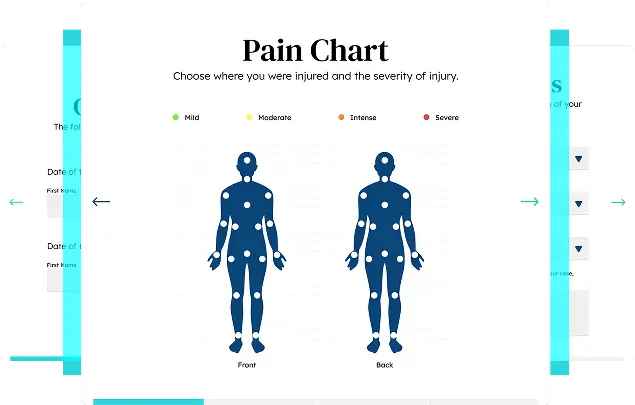Chelmsford Motorcycle Accident Attorney
Motorcyclists in Chelmsford, Massachusetts face unique risks and challenges on the road. When a negligent driver causes a crash, riders often suffer the most severe consequences. If you or a loved one has been injured in a motorcycle accident in Chelmsford, the skilled legal team at DiBella Law Offices is here to fight for your rights and pursue the compensation you deserve.
Get Free Advice About The Compensation You Deserve
Home » Chelmsford Personal Injury Lawyer » Chelmsford Motorcycle Accident Attorney
Reviewed by: Christopher DiBella
March 25, 2025
On This Page
- Experienced Legal Advocacy for Chelmsford Motorcycle Crash Victims
- The Risks Faced by Motorcyclists in Chelmsford
- Fighting for Full Compensation for Your Injuries and Losses
- Countering Bias Against Motorcyclists in Accident Claims
- Protecting Your Rights After a Chelmsford Motorcycle Accident
- Get Help From a Top Chelmsford Motorcycle Accident Lawyer Now
Experienced Legal Advocacy for Chelmsford Motorcycle Crash Victims
Motorcyclists in Chelmsford, Massachusetts face unique risks and challenges on the road. When a negligent driver causes a crash, riders often suffer the most severe consequences. If you or a loved one has been injured in a motorcycle accident in Chelmsford, the skilled legal team at DiBella Law Offices is here to fight for your rights and pursue the compensation you deserve.
The Risks Faced by Motorcyclists in Chelmsford
Chelmsford’s location near busy highways like I-495 and U.S. Route 3 means local riders must stay vigilant. However, even the most cautious motorcyclists cannot control the actions of other motorists. Common causes of motorcycle accidents include:
- Drivers failing to yield to motorcyclists
- Speeding and reckless driving
- Impaired or distracted driving
- Hazardous road conditions
When another party’s negligence leads to a crash, our experienced Chelmsford motorcycle accident lawyers are ready to hold them accountable.
Fighting for Full Compensation for Your Injuries and Losses
Because motorcyclists lack the protection of an enclosed vehicle, they are more likely to suffer catastrophic injuries in a wreck, such as:
- Traumatic brain injuries
- Spinal cord damage and paralysis
- Broken bones and fractures
- Road rash and disfiguring scars
- Amputation and limb loss
Our dedicated Chelmsford motorcycle accident attorneys will fight to recover maximum compensation for all your damages, including:
- Medical expenses
- Lost wages and reduced earning capacity
- Pain and suffering
- Emotional distress
- Permanent impairment or disfigurement
- Property damage
We work with experts to fully document your injuries and losses and build a strong case for the full compensation you need to move forward.
We’ve offered crucial support and guidance to individuals who have suffered injuries, ensuring their financial and emotional well-being.
Countering Bias Against Motorcyclists in Accident Claims
Despite advances in motorcycle safety, negative stereotypes about riders persist. Insurance companies often try to exploit these biases to deny claims or shift blame to the injured motorcyclist.
As skilled Chelmsford motorcycle accident lawyers, we know how to fight back against these prejudicial tactics. We conduct thorough investigations, gather critical evidence, and work with expert witnesses to build powerful cases on behalf of our clients. By telling your unique story and humanizing your claim, we can help insurers and juries focus on the facts, not stereotypes.
Get immediate case evaluation with no cost or obligation to you in less than 5 minutes.

Protecting Your Rights After a Chelmsford Motorcycle Accident
After a serious motorcycle crash, it is crucial to act quickly to protect your legal rights. The claims process can be complex and overwhelming, but our compassionate Chelmsford motorcycle accident attorneys are here to guide you every step of the way. We will:
- Provide a free case review to discuss your legal options
- Thoroughly investigate your crash to identify all liable parties
- Gather vital evidence to build a strong claim
- Handle all communication with insurance companies
- Fight tirelessly to achieve the best possible outcome for you
We work on a contingency fee basis, which means you pay no legal fees unless we win your case.
Get Help From a Top Chelmsford Motorcycle Accident Lawyer Now
If you have been hurt in a motorcycle wreck in Chelmsford, MA, do not wait to get the legal help you need. Contact DiBella Law Offices today for a free consultation with an experienced motorcycle accident attorney. You can reach us 24/7 at (855) 342-3552. Let us put our skills and resources to work for you.
